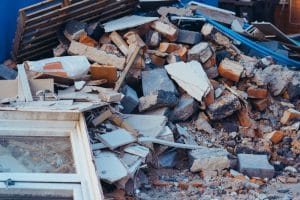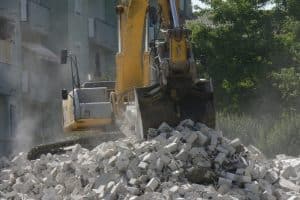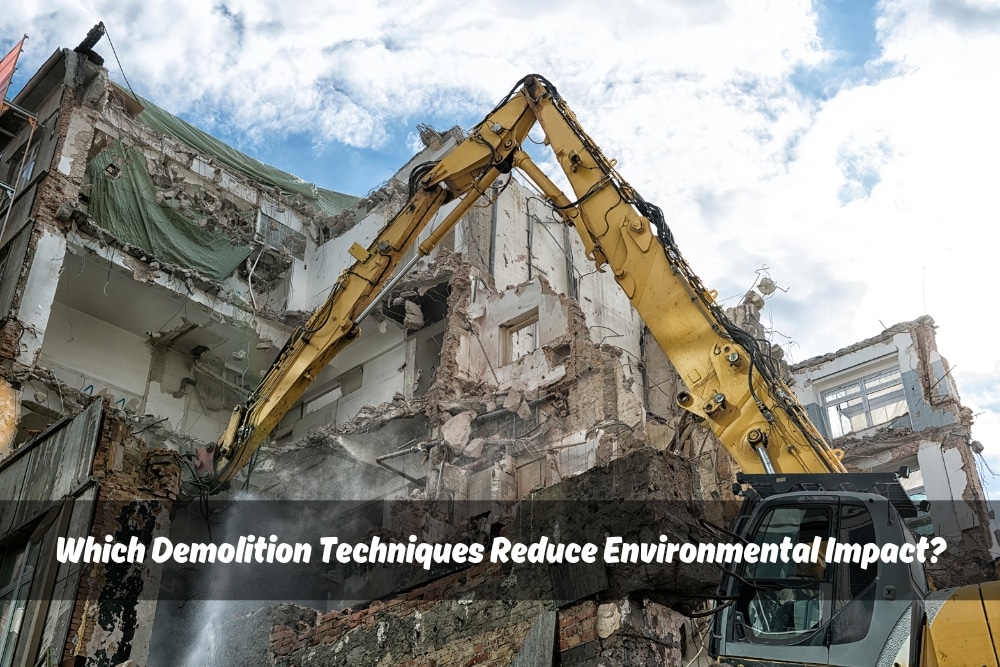Demolition isn’t all about wrecking balls and dust clouds anymore. These days, there are some pretty cool demolition techniques that go easy on the environment. So, if you’re facing a reno or revamping a site, here’s the lowdown on how to keep things green during demolition.
What are the most common demolition techniques?
There are three main ways to get a building down under:
- Big machinery: This is your classic smash-and-grab with excavators and bulldozers. It’s fast but can create a mountain of waste and needs careful handling of any nasties like asbestos.
- Big bang! Explosives can implode a building inwards, keeping dust and noise down.
- Piece by piece: Deconstruction is the meticulous approach. Buildings are carefully dismantled, with bricks, timber, and metals getting a second life. It takes time, but it’s a goldmine for recycled materials.
What role does selective demolition play in reducing environmental damage?
Selective demolition is like picking out the good stuff from your old clothes for a garage sale. It focuses on taking apart specific parts of a building to reuse or recycle. This means:
- Less landfill: No more mountains of rubble! Valuable materials get a new lease on life, keeping landfills happy.
- Resource rescue: Reusing existing materials means less need to mine for new ones, which is a win for the environment.
- Energy efficiency: Recycling old building stuff to make new stuff takes way less energy than starting from scratch! It’s good for the environment and saves you cash – win-win!
What is the impact of recycling and reusing materials in demolition projects?
Think demolition is all about destruction? Think again! Recycling and reusing materials during demolition are superstar moves for the environment:

- Raw material relief: By giving old materials a new job, we don’t need to dig up as much fresh stuff. This protects natural habitats and keeps ecosystems healthy.
- Energy champs: Making construction materials from scratch is a real energy guzzler. Recycling uses way less, meaning fewer greenhouse gas emissions.
- Double whammy of awesome: Turns out, that reusing stuff can actually be cheaper than buying new.
How do green demolition certifications influence demolition techniques?
Just like that energy rating sticker on your fridge, there are certifications for demolition companies that show their commitment to green practices. To get certified, companies gotta:
- Waste not, want not: Develop plans to ensure maximum recycling and minimal landfill waste. No more throwing everything in the same skip bin!
- Safety first, always: Train their crew on handling hazardous materials safely and using eco-friendly demolition techniques.
- Clean machines, cleaner air: Keep those machines in good shape to cut down on yucky fumes and noisy rumbles.
By choosing a green-certified demolition company, you can be sure your project is putting the planet first.
What are the best practices for minimising environmental impact during demolition?
So you’re keen to keep your demo project green? Here are some easy wins:
- Know your enemy: Before you start swinging the sledgehammer, do a pre-demolition check for nasties like asbestos. Special handling is needed for these!
- Plan it out: A good material management plan is key. This outlines how you’ll salvage, reuse, and recycle materials during demolition. Think of it as a treasure map for your demolition crew.
- Dust busters: Dust clouds are no fun for anyone. Use water sprays and mist cannons to keep dust under control and protect air quality.
- Peace and quiet: Respect the neighbours! Put up temporary sound barriers to minimise noise pollution during demolition.

Consider these tips – they’ll seriously green up your demolition project.
How can advanced technology improve the sustainability of demolition techniques?
The demolition industry is getting a tech makeover, and that’s good news for the environment:
- Sorting savvy: Automated sorting technology can efficiently separate and recycle different materials on-site, reducing human error and keeping things clean.
- 3D demolition plans: Fancy gadgets like 3D modelling and scanning help plan deconstruction precisely. This means maximising material recovery and minimising demolition waste.
- Electric dreams: Electric and hybrid demolition equipment is becoming a reality. These machines are a quieter and cleaner option than those rumbling diesel ones. Big difference in the noise and pollution they crank out.
These advancements are paving the way for a more sustainable future in demolition.
How do regulatory standards shape environmentally friendly demolition techniques?
Just like traffic lights keep things moving smoothly on the road, government regulations play a crucial role in shaping environmentally friendly demolition practices. Here’s how:
- Waste management hierarchy: Think of it like a high five for junk! Reduce, reuse, and recycle are the cool kids at the top. Landfill? That’s the awkward corner nobody wants to be in. Demolition companies can be total eco-champs by keeping as much waste out of landfills as possible.
- Material bans: There’s some nasty stuff out there, like asbestos, that needs major caution. Luckily, there are rules in place to ensure safe asbestos removal during demolition. Keeps the workers and the environment happy!
- Demolition permits: These permits often come with conditions that encourage sustainable practices. This could include setting specific recycling targets or requiring the use of dust suppression techniques.
By following these regulations, demolition companies ensure their projects are not only safe but also environmentally responsible.
The takeaways
Demo work doesn’t have to wreck the planet! By planning ahead, using smart techniques, and recycling what you can, your project can actually do some good for the environment. Thinking of ways to make your demolition a demolition on waste?
Watson Demolition & Site Services: Your partner in sustainable demolition
At Watson Demolition & Site Services, we’re passionate about green demolition. We use the latest techniques, have a team of experts trained in sustainable practices, and are committed to exceeding environmental regulations. Get in touch today for a free demolition quote, and let’s work together to turn your project into a win for the planet.



